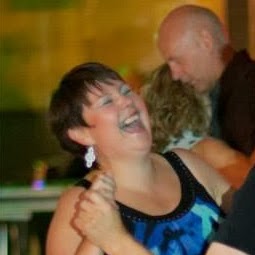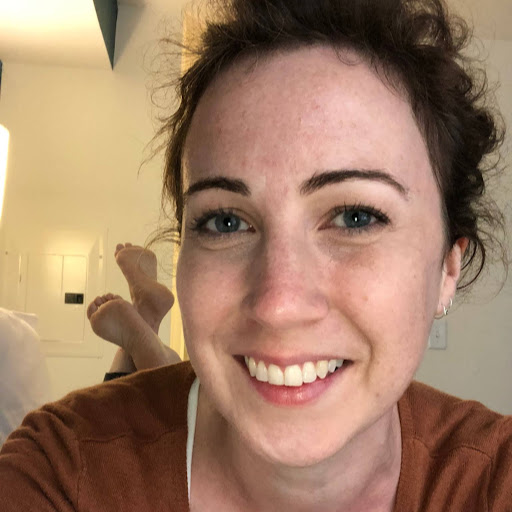Julia A Rice
age ~40
from Wilmington, DE
- Also known as:
-
- Julia A Coombs
- Juliaa Rice
- Phone and address:
-
800 Blackshire Rd, Wilmington, DE 19805
(302)4260582
Julia Rice Phones & Addresses
- 800 Blackshire Rd, Wilmington, DE 19805 • (302)4260582
- New York, NY
- Mesquite, TX
- Brunswick, ME
Us Patents
-
Field-Based Similarity Search System And Method
view source -
US Patent:20140052755, Feb 20, 2014
-
Filed:Oct 17, 2013
-
Appl. No.:14/056517
-
Inventors:Blake G. Fitch - White Plains NY, US
Hans W. Horn - San Jose CA, US
Wolfgang Huber - Murg-Ninederhof, DE
Julia E. Rice - Sunnyvale CA, US
William C. Swope - Morgan Hill CA, US -
Assignee:INTERNATIONAL BUSINESS MACHINES CORPORATION - Armonk NY
-
International Classification:G06F 17/30
-
US Classification:707771
-
Abstract:A field-based similarity search system includes an input device which inputs a query molecule, and a processor which partitions a conformational space of the query molecule into a fragment graph including an acyclic graph including plural fragment nodes connected by rotatable bond edges, computes a property field on fragment pairs of fragments of the query molecule from the fragment graph, the property field including a local approximation of a property field of the query molecule, constructs a set of features of the fragment pairs based on the property field, the features including a set of local, rotationally invariant, and moment-based descriptors generated from all conformations of the fragment graph of the query molecule, and weights the descriptors according to importance as perceived from a training set of descriptors to generate a context-adapted descriptor-to-key mapping which maps the set of descriptors to a set of feature keys.
-
Precision-Preserving Qubit Reduction Based On Spatial Symmetries In Fermionic Systems
view source -
US Patent:20210118529, Apr 22, 2021
-
Filed:Oct 22, 2019
-
Appl. No.:16/660059
-
Inventors:- Armonk NY, US
Antonio Mezzacapo - Westchester NY, US
Richard Chen - Mount Kisco NY, US
Marco Pistoia - Amawalk NY, US
Julia Elizabeth Rice - Sunnyvale CA, US -
International Classification:G16C 10/00
G16C 20/50
G16C 20/90
G06N 10/00
G06F 17/16 -
Abstract:Systems and techniques that facilitate precision-preserving qubit reduction based on spatial symmetries in fermionic systems are provided. In one or more embodiments, a symmetry component can generate a diagonalized second quantization representation of a spatial point group symmetry operation. The spatial point group symmetry operation can be associated with a molecule (e.g., a geometrical rotation, reflection, and/or inversion of a physical molecule that results in a new molecular orientation that is substantially the same as the original molecular orientation). In one or more embodiments, a transformation component can convert the diagonalized second quantization representation into a single Pauli string. In one or more embodiments, a tapering component can taper off qubits in a computational quantum algorithm that models properties of the molecule, based on the single Pauli string. Various embodiments can thus leverage geometrical spatial symmetries of a molecule to reduce a number of qubits needed to simulate the molecule.
Name / Title
Company / Classification
Phones & Addresses
RC TRUCKING LLC
Resumes

Julia Rice
view sourceLocation:
Greater New York City Area
Industry:
Information Technology and Services

Family And Consumer Science Teacher
view sourceLocation:
Wilmington, DE
Industry:
Education Management
Work:
Christina School District
Family and Consumer Science Teacher
Pottery Barn Sep 2008 - May 2016
Assistant Store Manager- Design
Target Jan 2007 - Sep 2008
Etl- Hardlines
Family and Consumer Science Teacher
Pottery Barn Sep 2008 - May 2016
Assistant Store Manager- Design
Target Jan 2007 - Sep 2008
Etl- Hardlines
Education:
University of Delaware 2005 - 2007
Bachelors, Bachelor of Science, Fashion
Bachelors, Bachelor of Science, Fashion
Skills:
Store Management
Retail
Merchandising
Customer Service
Visual Merchandising
Inventory Management
Sales
Microsoft Office
Time Management
Retail Sales
Visual Arts
Retail
Merchandising
Customer Service
Visual Merchandising
Inventory Management
Sales
Microsoft Office
Time Management
Retail Sales
Visual Arts

Bartender
view sourceWork:
East Village Grille
Bartender
Bartender

Julia Rice
view source
Julia Rice
view source
Julia Rice
view source
Julia Rice
view sourceLocation:
United States

Director Of Product Development At Hct Packaging Inc.
view sourceLocation:
Greater New York City Area
Industry:
Cosmetics
Youtube
Flickr
Googleplus

Julia Rice
Work:
Boise Philharmonic - Violinist (1974)
Relationship:
In_a_relationship

Julia Rice
Work:
Roounders England Ltd - Marketing

Julia Rice

Julia Rice

Julia Rice

Julia Rice

Julia Rice

Julia Rice
Myspace

Julia Rice
view sourceLocality:
Where the wind comes sweeping down the plain, Oklahoma
Gender:
Female
Birthday:
1948

Julia Rice
view source
Julia Rice
view source
Julia Rice Hoornstra
view source
Julia Elizabeth Rice
view source
Julie Rice Thall
view source
Julia Perry Rice
view source
Julia E. Rice
view source
Julia Rice
view sourceClassmates

Julia Rice (Chavez)
view sourceSchools:
Deer Valley High School Glendale AZ 1996-2000
Community:
Christopher Martin, Christy Oberuc

Julia Rice
view sourceSchools:
St. Gregory School Dorchester MA 1978-1982
Community:
Lee Clauss, Michael Morgante, Virginia Porter, Patrick Kane

Julia Rice (Ancrum)
view sourceSchools:
Alston High School Summerville SC 1964-1968
Community:
Kelly King, Eliza Perry

Julia Rice
view sourceSchools:
Breck School Minneapolis MN 1969-1973
Community:
Vickie Wavra, Barbara Cross, Ferdinand Ruplin, Elizabeth Goddard

Julia Rice
view sourceSchools:
Timothy Christian High School Elmhurst IL 1990-1994
Community:
Janet Haan, Marian Vanstedum, Kenneth Boss, Randall Meyer

Julia Rice (Goshorn)
view sourceSchools:
Susquehanna Township High School Harrisburg PA 1955-1959
Community:
Trisha Bentzel, Jill Samuels, Vicki Kopac

Julia Ormsby (Rice)
view sourceSchools:
Ysleta High School El Paso TX 1952-1956
Community:
Edna Rodriguez

Maryville University of S...
view sourceGraduates:
Brooke Long (2000-2004),
Julia Rice (1975-1978),
Kimberley Kvaternik (1993-1998),
Bradley Hanson (1987-1990)
Julia Rice (1975-1978),
Kimberley Kvaternik (1993-1998),
Bradley Hanson (1987-1990)
Get Report for Julia A Rice from Wilmington, DE, age ~40















